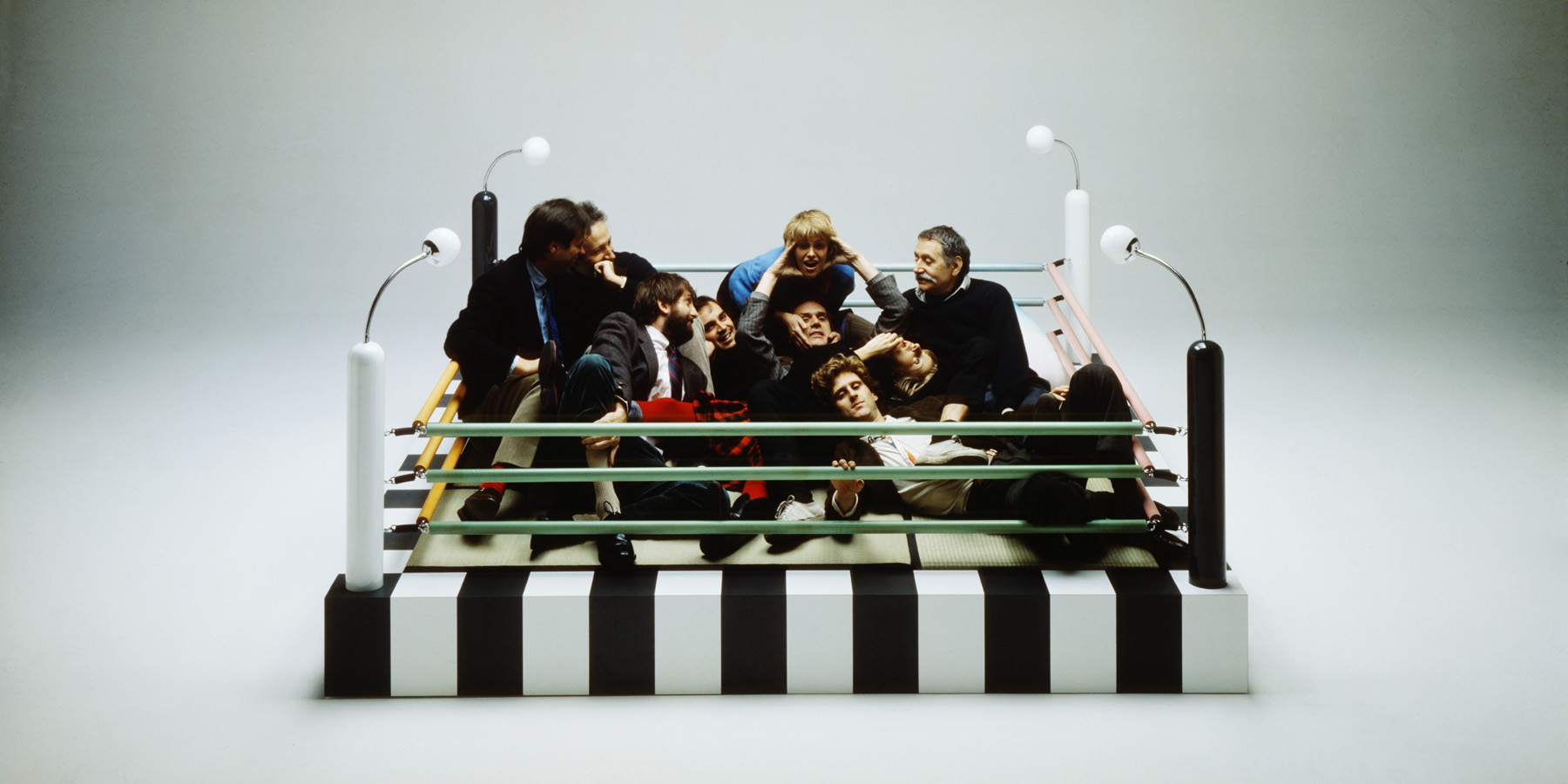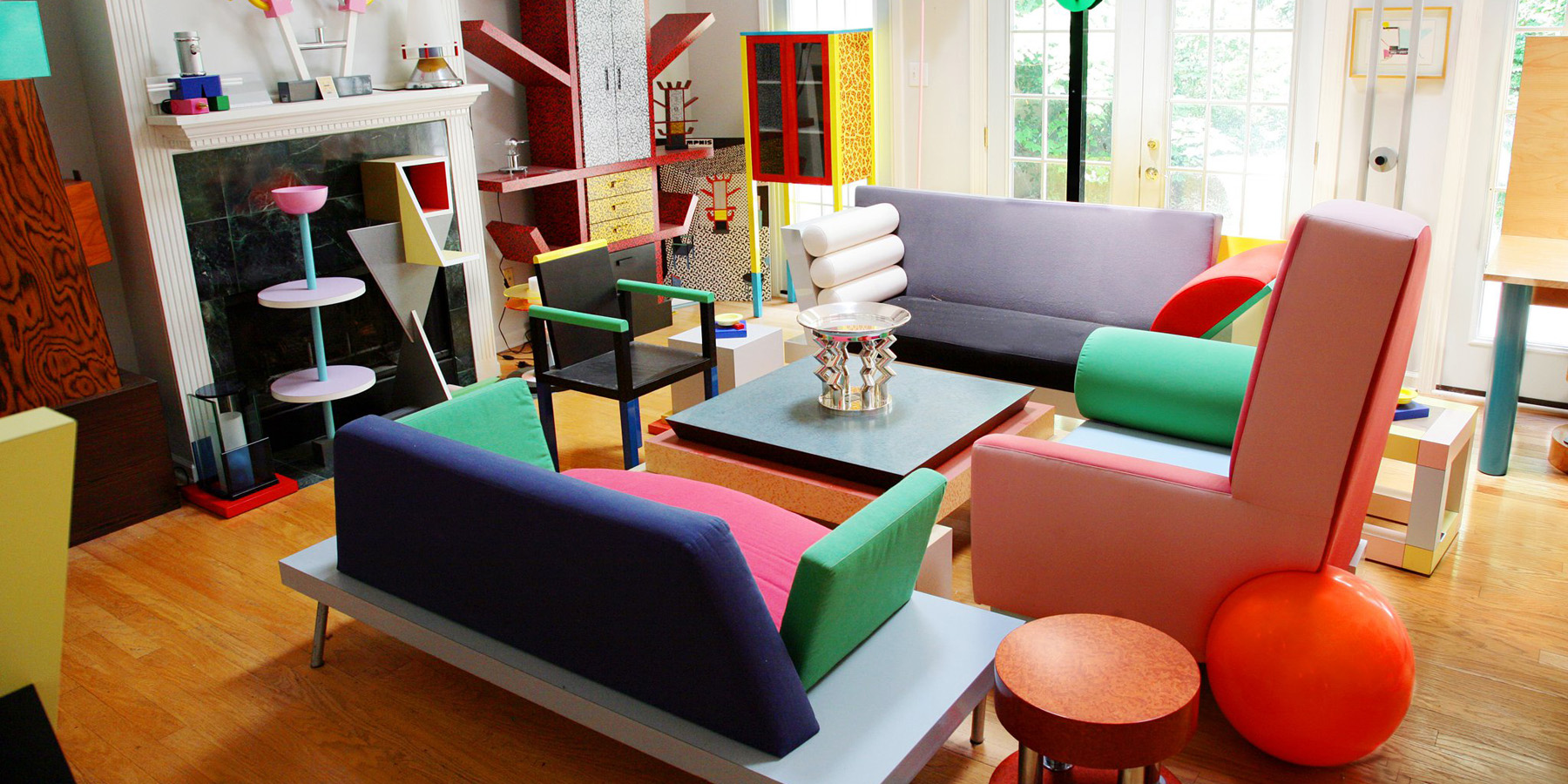

















The name Memphis was chosen because it is the city in Tennessee where Elvis Presley lived, but also the capital of Ancient Egypt.
Ettore’s friends on hand that evening were Martine Bedin, Aldo Cibic, Michele De Lucchi, Nathalie Du Pasquier, Matteo Thun, and George J. Sowden. Memphis was later also joined by Andrea Branzi, Shiro Kuramata, Marco Zanini, Peter Shire, Gerard Taylor, Masanori Umeda, Arquitectonica, Michael Graves, Hans Hollein, Arata Isozaki, Javier Mariscal.
On 19 September 1981, at the gallery Arc '74 during the Salone del Mobile in Milan 55 pieces were shown, including furniture, lamps and ceramic objects. Three months later, over 400 periodicals, on a worldwide scale, paid tribute to the success of Memphis.

Memphis in the 1980s – building on the experiences of Radical Design of the 1960s – experimented with new languages, making it possible to redefine the anthropological relations between people and objects.
This Nuovo Design fully responded to the need to reflect the requirements of a complex society. It was no longer sufficient for an object to be simply “functional”; the object was now charged with symbolic, poetic and affective meanings.
With Memphis, forms balanced between pop culture, high culture and ironic classicism merge in products based on a flamboyant mixture of these factors. A disruptive aesthetic, between kitsch and elegance.
Materials played a key role in this expressive attitude that activated the sensory channels of users. Use was made of contrasting materials: innovative ingredients like the decorative laminates of Abet Laminati – decorated by the designers themselves – were combined with precious substances like briar.
THE PARTICULAR BOND BETWEEN ART AND CRAFTSMANSHIP, IN WHICH METAPHOR AND ALLEGORY CAN REASSEMBLE MEANINGFUL FRAGMENTS TO CREATE “SPEAKING” FURNITURE, IS PART OF THE GENETIC MAKEUP OF MEMPHIS. TO BRING “HANDIWORK” BACK TO THE ATTENTION OF OFFICIAL CULTURE, AND ARTISANAL DESIGN AS AN ALTERNATIVE TO INTERNATIONALIST ARCHITECTURE, REPRESENTED ONE OF THE GROUP’S OBJECTIVES FROM ITS BEGINNINGS IN THE 1980s.

The aim of Memphis was to create a “platform", a workshop, an observatory for critical and design reflections, against the aesthetics, materials and production modes of industrial design.
To explore the expressive and cultural possibilities of design beyond marketing, Memphis responded to the need of companies to develop a new production strategy focused on small “trend markets,” to produce new design objects conceived not for the mass market, but for a “selected” audience.
These products stand out for the high level of “emotional value” they are able to transmit, which goes well beyond functionality and ergonomics (though those factors are present). Not just “function” then, but also “emotional impact” to: update and rejuvenate the language of design and architecture; to challenge the dogmas of functionalism and industrial design; to celebrate the banal and the everyday dimension; to break down the taboos of good taste. To generate optimism, with the desire to change the world.
THE GREAT CONTRIBUTION OF MEMPHIS TO THE RESURGENCE OF DECORATION AS A QUALIFYING AND CHARACTERISTIC VALUE IN DESIGN, WITH THE USE OF NEW MATERIALS TAKEN TO THE HIGHEST LEVELS OF EXPRESSIVE POTENTIAL, RETURNS IN CONTEMPORARY TRENDS WHERE SPACES ARE FURNISHED WITH MORE AND MORE PERSONALIZATION AND CULTURAL CONTAMINATION.
“Strong ideas are short-lived, and it is not possible to develop them further,” said Sottsass, who left Memphis in 1985.
The group lasted for the time necessary to put into practice an initial, revolutionary intuition: to create totemic, isolated, easily dismantled, multifunctional, transformable objects. Design pieces that would erode the stylistic unity of interiors.
Objects that identify strong codes of spatial identification. These are ideas that still inspire entire generations of designers today. Because Memphis is a “non-historic” brand, still alive in the present. This is proven by its timeliness, recognizability and influence on aesthetics, within the culture of design and graphics.
Over 40 years of “disobedience” with respect to “good design,” years that still represent a warning iagainst standardization and intellectual dullness. The Memphis experience invites contamination, urging the creation of images and the telling of stories. Memphis has been capable of foreseeing changes, which shortly thereafter would have an impact on the society as a whole.